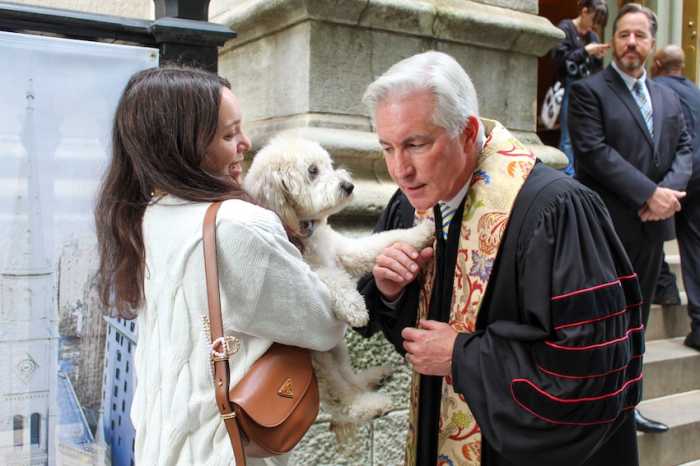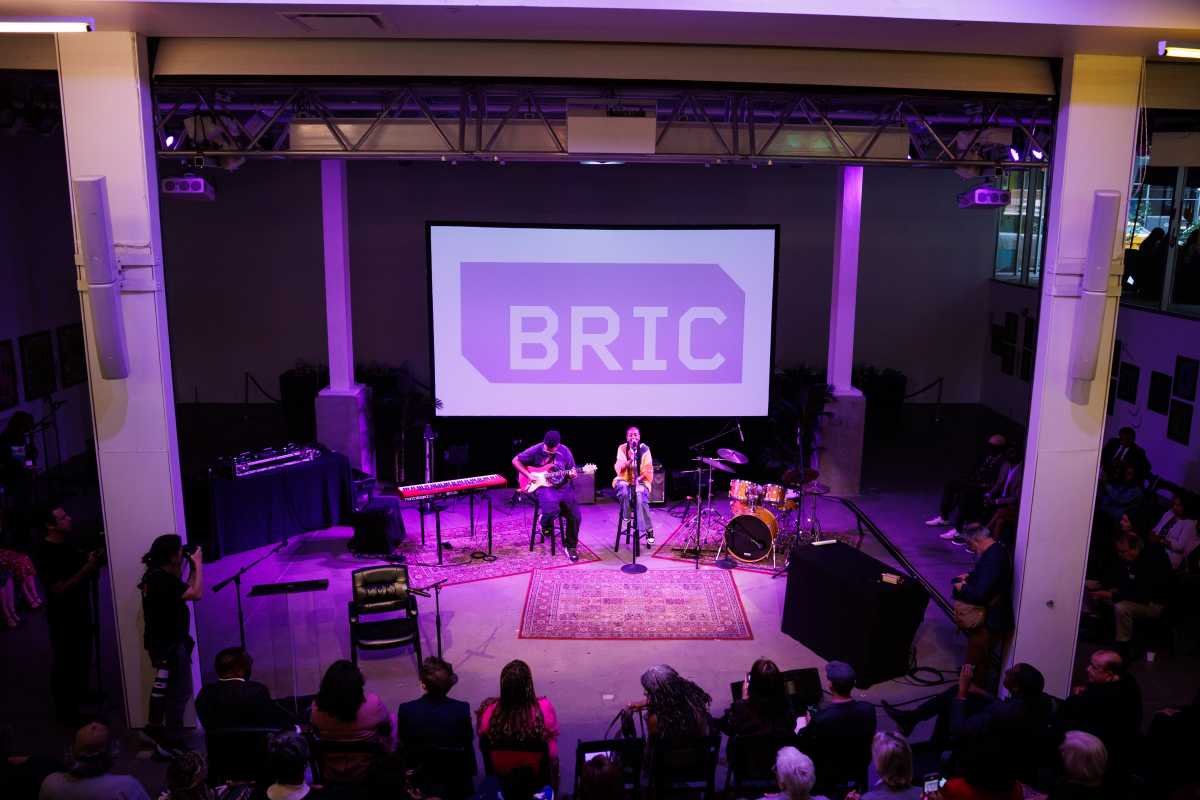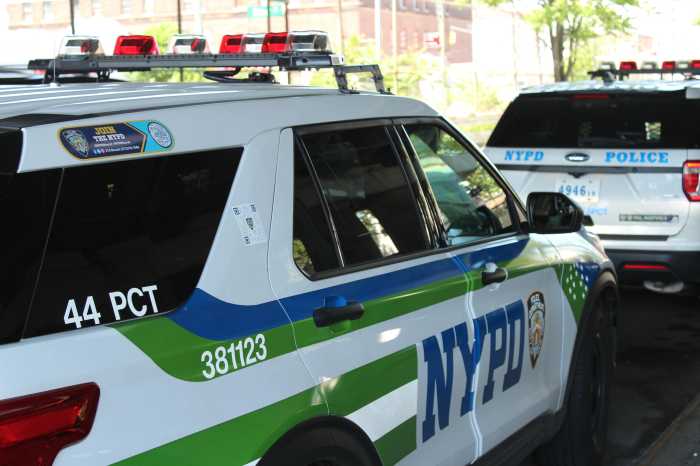By Lincoln Anderson
Village Care of New York, which operates the Village Nursing Home, is forging ahead with its plan to build a new facility on W. Houston St., but has dropped its scheme to build up to four other scattered satellite facilities in the Village.
Village Care, however, still intends to sell its existing nursing home, at W. 12th and Hudson Sts.
Construction on the new building — at the site of a garage on W. Houston St. between Sixth Ave. and Varick St., extending through the block to Downing St. — should start in early 2007 and finish by spring 2008. The 53,000-square-foot building is budgeted at $25 million.
“It’s probably the largest project for seniors built in this part of the West Village in the last 50 or 60 years. And we are the only nursing home on the West Side of Manhattan from 86th St. down,” said Arthur Webb, Village Care C.E.O.
The new facility will have 100 beds, down from 200 in the current Hudson St. nursing home, partly necessitated by federal space codes. At the old nursing home, there is, on average, 235 square feet of space over all for each senior, while in the new one, there will be more than 500 square feet of space for each senior.
However, Webb said, Village Care has been told it will receive the financial equivalent of “100 beds” in government funds, which it will use to provide care to seniors living at home throughout its Village catchment area. Called SeniorChoices, the program will be funded as a special demonstration project, Webb explained.
The C.E.O. said there were several reasons why they dropped the scattered-sites plan and will now only build on W. Houston St. Focus groups with seniors, elected officials and others showed that many local seniors want to “age in place” and liked the idea of home-based healthcare. Also, the process of getting all the approvals for the new site proved lengthy — “incredible,” as Webb put it; special permits and two zoning variances were needed, including one for use of the community facilities zoning allowance to add extra bulk. Plus, all the while, Village real estate prices kept rising.
Greenwich Villagers rallied to save the Village Nursing Home from closing in 1977, and Webb readily admits it is a community “icon.” But it’s outdated. The nursing home was put on the market, and was fetching some high offers — Webb did not want the dollar amounts published — and has since been taken off the market, only temporarily, though. The plan is to use the nursing home’s sale to finance the new building’s construction and pay off a $6 million debt on improvements made to the existing building.
Webb noted that — in addition to being in the landmarked Greenwich Village Historic District — the 1908 nursing home is “totally maxed out on F.A.R. [floor-to-area ratio],” meaning the new owner would not be able to add additional stories. Situated between the Meat Market and the west end of Bleecker St. with its boutiques, it’s a very hot property, he said.
The new Village Care building will offer 56 percent private rooms and the rest doubles, all with in-room private bathrooms. Seventeen to 22 individuals will share each floor, each of which will have a central dining room and kitchen.
Webb describes the layout of rooms as emphasizing “privacy, dignity and independence,” while the clustering around the central space “will allow for intimacy and social gathering that’s not institutional.” A glass-sheathed shaft on the building’s east side off each floor’s central area will allow natural light to stream through from the top to the bottom.
Village Care hopes to serve about 600 seniors per year at the new building. Not all patients will be in for long-term stays at the new facility, which will offer state-of-the-art rehabilitation programs.
Village Care worked closely with neighbors, elected officials and the Greenwich Village Society for Historic Preservation over an eight-month period to take into account neighbors’ concerns about the project and to incorporate their suggestions in the final design. A garden planned on Downing St. was removed because neighbors wanted the building’s wall to come all the way out to the building line; by doing this, the project’s height, in turn, dropped from seven to six stories. Also, neighbors objected to what Webb described as “a variety of really cool structures on the roof…trellises,” so they removed these from the plans. An entrance on Downing St. was also scratched as a result of community objections. The building’s exterior will be contextual with neighborhood architecture.
Webb said Village Care didn’t mind the extensive give-and-take with the community on the building design and incorporating neighbors’ suggestions. Asked to compare their community process with that of New York University’s for its E. 12th St. dorm project, Webb laughed and said he wouldn’t go there.
“That’s just part of the public responsiveness,” he said. “We are a community organization. We are the Village. They would expect that of us. This is a small, close-knit community — you can’t run around in secret.”
As for the Metro Parking garage currently on the site, Village Care bought its 20-year lease from an estate that owned it. Bob Rinaolo, a Community Board 2 member, did have some ownership interest, but Webb said he wasn’t sure of the specifics.
There are 30,000 seniors over age 65 in the Chelsea and Village area, a number expected to increase to 36,000 to 40,000 in the next six years as the baby boomers mature. With its new building, as well as its emphasis on community-based care outside of the facility, Village Care hopes to be ready to meet the new needs.
“We want to be ahead of the curve a little bit,” Webb said. “Well, hopefully, a lot. As we know, baby boomers are demanding. They’ll be wanting to stay at home, not go to a nursing home — and want the highest quality.”







































